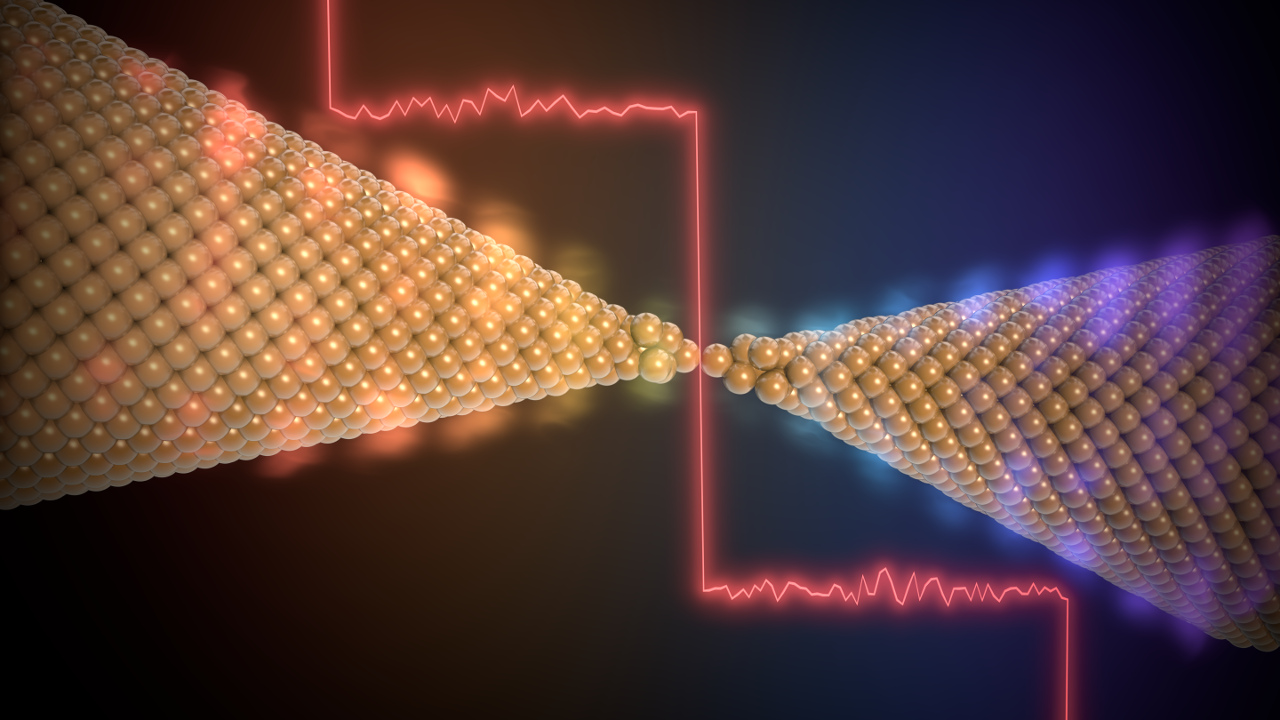Research interests:
The goal of our research is the theoretical description of the electrical, mechanical, optical, and heat transport properties of a great variety of nanostructures and low-dimensional systems. We cover different topics in the fields of nanoelectronics, nanooptics, nanoscale thermal transport, and mesoscopic superconductivity with special emphasis in:
Molecular Electronics
Recent advances in the manipulation of single molecules now permit to contact individual molecules between two electrodes and measure their electronic transport properties. Moreover, it has already been shown that certain molecules can indeed behave as some of the ordinary components of today's microelectronics. This fact has not only triggered the hope that single molecules may be used as electronically active elements in a variety of applications, but it has also posed a fundamental challenge, namely the understanding of the different physical mechanisms that control the electrical conduction at the single-molecule scale. The goal of our research in this field is the theoretical description of the charge and heat transport through single-molecule junctions. In particular, our approaches, which are mainly based on the density functional theory, aim at elucidating the relation between the electronic structure of individual molecules and the electrical current of the circuits in which they are embedded.
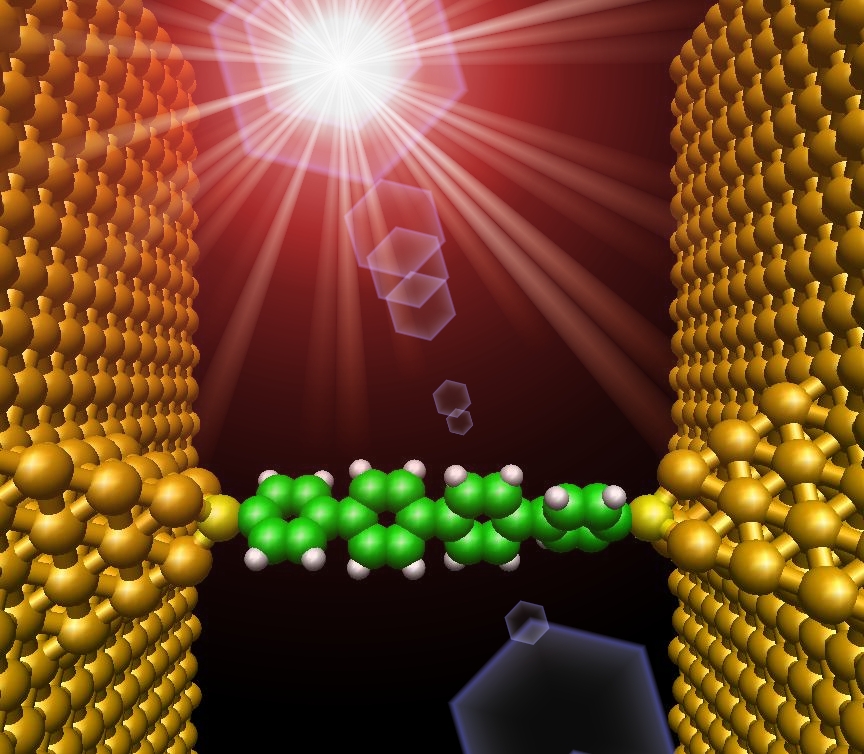
Artificial Intelligence (AI) and Physics
Artificial intellegence is having a tremendous impact in many areas of computer science and engineering. Triggered by the availability of large data sets and recent advances in architectures, algorithms, and computational hardware, artificial intellegence (AI) techniques are having a huge impact in topics such as computer vision, natural-language processing, autonomous driving, or speech recognition, just to mention a few. Motivated by this success, AI is attracting incresing attention from researchers in other disciplines. In particular, AI have already found numerous applications in the physical sciences. In this context, the goal of our research in this topic is to use techniques and algorithms of Machine Learning, Deep Learning and Reinforcement Learning, the three major areas of AI, to tackle different physical problems, with special emphasis in the fields of Nanophotonics and Radiative Heat Transfer.
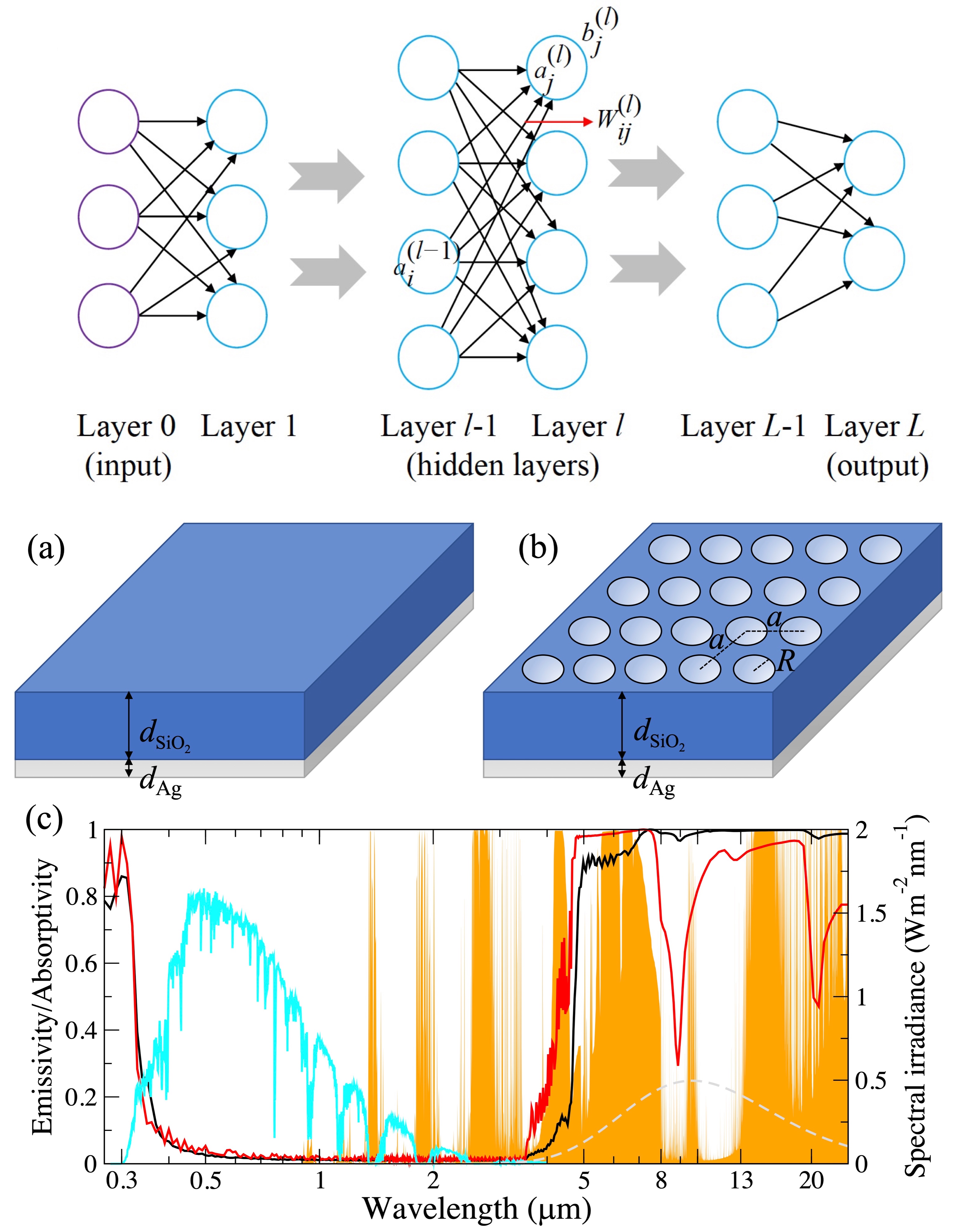
Nanooptics: Nanoplasmonics and Magneto-plasmonics
The ability of metallic structures to sustain both localized plasmon modes and surface plasmon polaritons has been the key to find new ways to concentrate light to sub-wavelength volumes and to manipulate its propagation in integrated photonic devices. The investigation of the optical properties of metallic nanostructures has given rise to the field of Nanoplasmonics. On the other hand, in the search for an active control of the light propagation in plasmonic structures, a lot of attention has been devoted to systems that incorporate ferromagnetic materials to take advantage of their magneto-optical properties. In particular, the idea of combining plasmonic systems with magneto-optically active materials has given rise to a new field known as Magneto-plasmonics. In the framework of these two new subfields of Nanooptics, the main goals of our research are: (i) the study of the optical response of nanoscale metallic systems, and (ii) the analysis of the propagation of electromagnetic waves in magneto-plasmonic nanostructures.
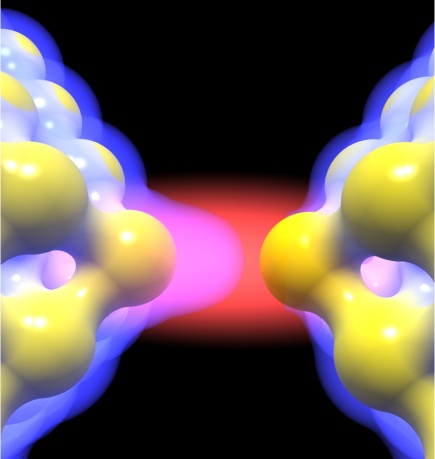
Spintronics
Spintronics, also known as magnetoelectronics, is an emerging technology that exploits the intrinsic spin of the electron and its associated magnetic moment, in addition to its fundamental electronic charge, in solid-state devices. The most emblematic physical phenomena in this field are the giant magnetoresistance (GMR), the tunnelling magnetoresistance (TMR), and the anisotropic magnetoresistance (AMR). The common origin of these phenomena is the spin dependence of the electrical resistance in devices made of ferromagnetic materials. The understanding of these physical effects has already led to various applications such as hard disk drives or magnetic sensors. Our research in this field focuses on the following aspects: (i) the study of fundamental physical phenomena as a result of the interplay between magnetism and superconductivity in hybrid nanostructures, (ii) the use of ferromagnet-superconductor junctions to extract the spin polarization of the current in ferromagnetic metals, and (iii) the analysis of the basic magnetoresistive effects when the dimensions of the spintronic devices are shrunk to the atomic scale.
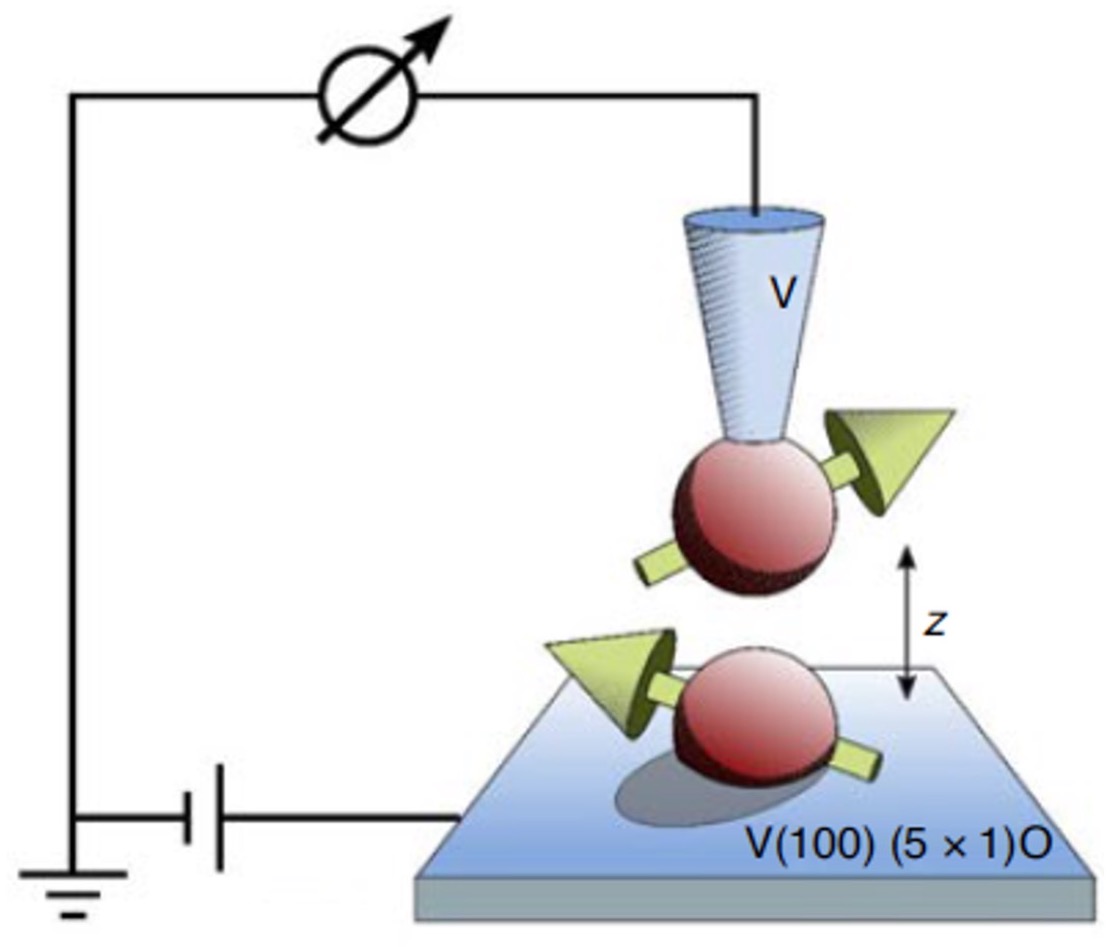
Near-Field Radiative Heat Transfer
Radiative heat transfer between objects at different temperatures is of fundamental importance in applications such as energy conversion, thermal management, lithography, data storage, and thermal microscopy. It was predicted long ago that when the separation between objects is smaller than the thermal wavelength, which is of the order of 10 microns at room temperature, the radiative heat transfer could be greatly enhanced over the theoretical limit set by the Stefan-Boltzmann law for blackbodies. This is possible due to the contribution of the near field in the form of evanescent waves (or photon tunneling). In recent years, different experimental studies have confirmed this long-standing theoretical prediction. These studies have, in turn, triggered off the hope that near-field radiative heat transfer can have a strong impact in different nanotechnologies that make use of thermal radiation. In this context, the main goal of our research is to establish the basic laws and principles that govern radiative thermal transfer at the nanoscale.
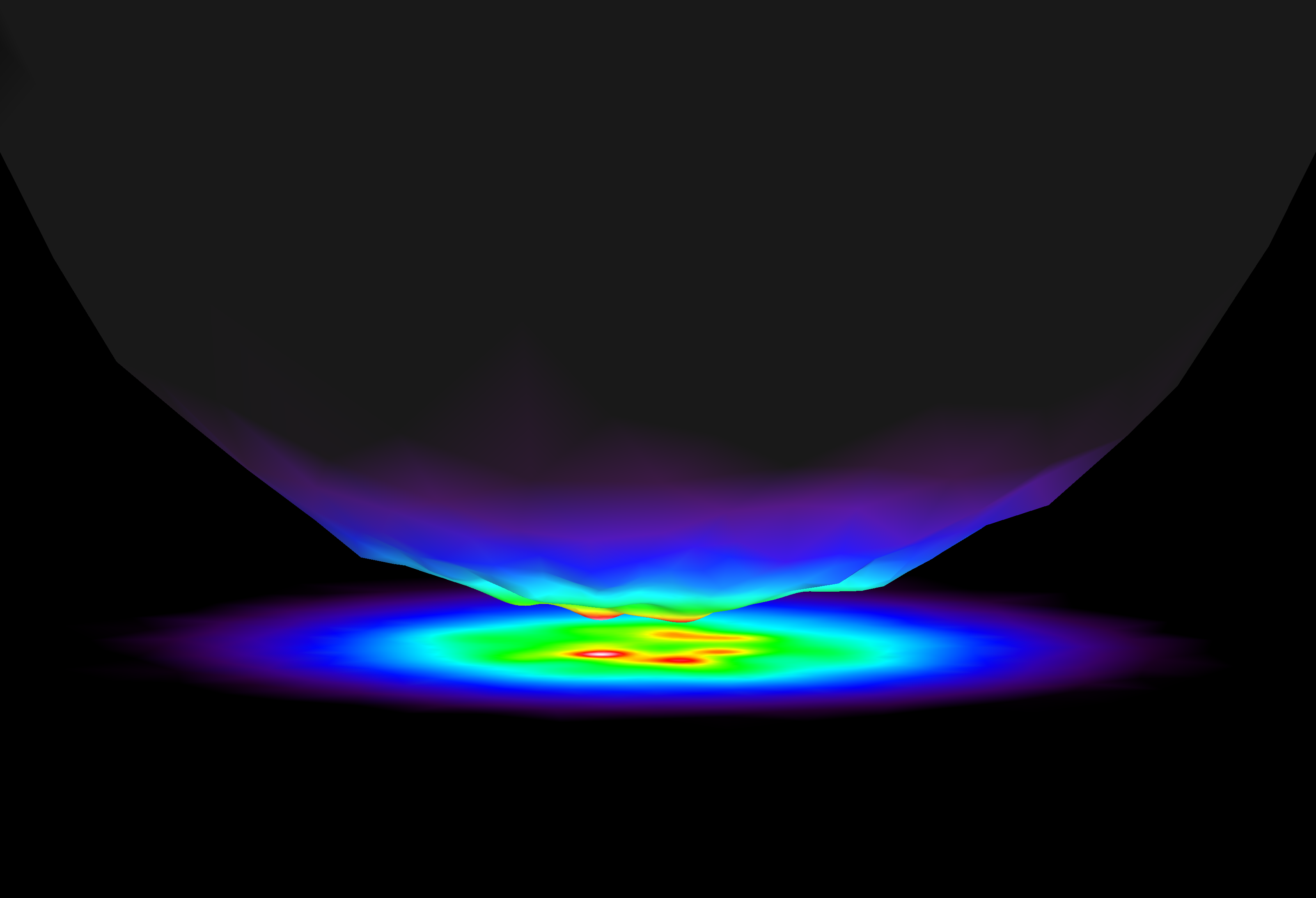
Mesoscopic Superconductivity: Hybrid Nanostructures and Superconducting Atomic Contacts
Superconductivity is one of the most fascinating quantum effects in condensed matter systems. With the advent of new fabrication techniques in the last two decades, it has been possible to explore this phenomenon in novel systems and devices, which has given rise to the field of Mesoscopic Superconductivity. In this field, special attention has been devoted to the transport properties of these mesoscopic structures, which include exotic phenomena like the Josephson effect. In this context, our work in mesoscopic superconductivity focuses on two different issues. First, we have extensively investigated the so-called proximity effect in hybrid superconducting nanostructures. In this case, the goal is to understand how the properties of a non-superconducting material are modified when it is brought into contact with a superconductor. In this sense, in recent years we have studied the transport properties of hybrid nanostructures containing normal metals, ferromagnets, and quantum dots. On the other hand, we have also investigated different transport properties of superconducting atomic contacts. These contacts can be fabricated with the help of the scanning tunneling microscope and break-junction techniques. A metallic atomic-size contact sustains a reduced number of conduction channels and this fact has allowed for quantitative comparison of theory and experiment for many transport properties. For this reason, atomic contacts have proven to be an amazing test-bed for concepts in mesoscopic superconductivity. The goal of our research in this topic is the theoretical analysis of different transport properties of these superconducting point contacts.
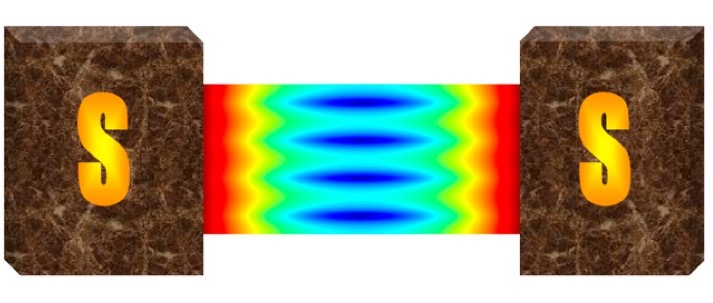
Metallic Atomic-size Contacts
Using remarkably simple experimental techniques it is possible to gently break a metallic contact and thus form conducting nanowires. During the last stages of the pulling a neck-shaped wire connects the two electrodes, the diameter of which is reduced to single atom upon further stretching. For some metals it is even possible to form a chain of individual atoms in this fashion. Although the atomic structure of contacts can be quite complicated, as soon as the weakest point is reduced to just a single atom the complexity is removed. The properties of the contact are then dominantly determined by the nature of this atom. This has allowed for quantitative comparison of theory and experiment for many properties, and atomic contacts have proven to form a rich test-bed for concepts from mesoscopic physics. Our research in this topic covers many different aspects of the charge and heat transport in these nanowires.
